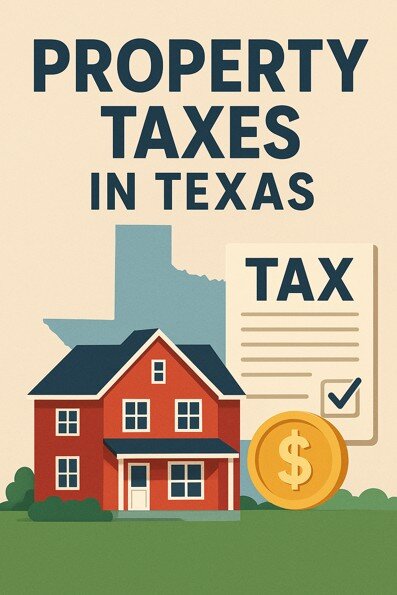
Texas is known for having no state income tax—but that benefit comes with a catch: higher property taxes. If you’re a homeowner in the Lone Star State, understanding how to reduce your property tax bill can lead to significant savings each year. In this guide, we’ll explore the most effective tips that actually work, from protesting your property value to taking advantage of exemptions.
Why Texas Property Taxes Are So High
Texas doesn’t collect income taxes, so local governments rely heavily on property taxes to fund schools, infrastructure, public safety, and other essential services. These taxes are levied by multiple local entities, including counties, cities, school districts, and special-purpose districts.
Because of this, property tax rates in Texas are among the highest in the nation, typically ranging from 1.6% to 2.3% of your property’s assessed value—well above the national average.
Who Can Lower Their Property Taxes in Texas?
Most property owners have some ability to reduce their taxes. Whether you’re a first-time homeowner, a retiree, or a real estate investor, there are legal methods to lower your property tax bill—if you understand your rights and take action.
Understand Your Appraisal Notice
Each year, your local County Appraisal District (CAD) sends you a Notice of Appraised Value. This document lists the value assigned to your property, which directly impacts your tax bill.
If that value seems too high, you’re entitled to challenge it. But first, you need to understand how it was calculated.
How to Access Your County Appraisal District’s Data
Most CADs have websites where you can:
- Search your property’s valuation history
- See comparable property sales in your area
- Access protest and exemption forms
Visit your CAD’s official site (e.g., Harris County Appraisal District, Travis CAD) and search by your property address or account number.
Documents You’ll Need to File an Appeal
To successfully protest your appraisal, gather:
- Your current appraisal notice
- Recent comparable sales (ideally from the past year)
- Photos of property defects (if applicable)
- Independent appraisals (optional but powerful)
- Any documents showing a recent decline in property value
Top Ways to Lower Your Property Tax Bill
There are multiple strategies to reduce your Texas property taxes. Some involve challenging your valuation; others involve applying for special exemptions.
Use Comparable Sales to Challenge Your Valuation
One of the most effective ways to protest your tax assessment is by presenting comparable sales (“comps”). These are recent sales of similar homes in your neighborhood that sold for less than your appraised value.
If your CAD overestimated your property’s value, showing comps with lower sales prices can be a strong argument to get your appraisal—and therefore your tax bill—reduced.
Check for Homestead and Senior Exemptions
If the property is your primary residence, you’re likely eligible for the Homestead Exemption, which can knock tens of thousands of dollars off your assessed value.
If you’re 65 or older or disabled, you may qualify for additional exemptions and even a freeze on school taxes, meaning they can’t increase beyond a certain point.
How to File a Property Tax Protest in Texas
To dispute your appraisal, you typically must:
- File a protest (usually by May 15 or 30 days after receiving your notice)
- Attend an informal hearing with the appraisal district
- If unresolved, request a formal hearing with the Appraisal Review Board (ARB)
You can file online through your CAD’s portal or submit a physical protest form. Be professional, well-organized, and prepared with your documentation.
Exemptions That Can Help You Save
Texas offers several property tax exemptions that can significantly reduce your tax burden:
- General Homestead Exemption: For primary residences (up to $100,000 off school taxes in 2025)
- Over-65 Exemption: Additional savings for seniors
- Disabled Person Exemption
- Veteran or Surviving Spouse Exemptions
- Agricultural and Wildlife Use Exemptions
Each exemption has specific eligibility rules. Be sure to read instructions carefully and apply on time.
When and How to Apply for Property Tax Relief
Most exemption applications are due by April 30 of the tax year. You typically only need to apply once, unless your situation changes.
Steps to apply:
- Download the relevant form from your CAD or the Texas Comptroller website
- Submit the form with required proof (e.g., ID, utility bill, medical documentation)
- Keep a copy of your confirmation or submission
If approved, your property’s taxable value will be adjusted and reflected on your next tax bill.
Other Strategies to Keep Your Tax Bill Low
- Review your appraisal every year: Appraisal values can increase annually.
- Stay informed on bond measures: Local elections often include tax-affecting proposals.
- Avoid property improvements that increase value unless necessary.
- Hire a property tax consultant: Especially helpful for large or complex properties—they often work on a contingency fee.
Final Thoughts on Saving Money on Texas Property Taxes
Property taxes in Texas aren’t going away, but with the right knowledge and timing, you can take control of your bill. Review your appraisal every year, protest when necessary, and make full use of exemptions you qualify for. Staying proactive and organized can lead to hundreds or even thousands in savings annually.Need help finding your county’s appraisal district or protest forms?
Visit the Texas Comptroller’s County Directory to get started.